On all fours on the ground, I harvest young shoots of lamb’s lettuce. A fine rain falls on my shoulders and the smell of sauerkraut hangs in the air. I do not like the lamb’s lettuce harvest. It is long and painful. The shoots are fragile, the fingers full of soil and the knees sore. And the culture beds are so long that you cannot see the end of them. Beside me, two of the farm workers are chatting to overcome boredom. They talk about politics, the pandemic, social issues and the hardships of the farm.
I left Limousin for Alsace. Swapped medicinal plants and chestnuts for organic vegetables. Traded a large cold room for a tiny trailer in the middle of the fields. Continued my journey to discover other ways of life. Since the end of October 2021, I have been working voluntarily in a small organic market gardening farm in the heart of Alsace, in the Ried valley. I arrived two days before the start of the second confinement. Faced with the rapid rise in the number of Covid19 cases in France, the government has declared a new confinement. But unlike the first, this one seems to have a much less impact on everyday life.
About twenty kilometers from Strasbourg, not far from the Rhine and the German border, is a small village with pretty traditional half-timbered houses where the farm is located. About ten hectares dedicated to organic market gardening and the establishment of an agricultural landscape in connection with living things through the planting of hedges and biodiversity corridors. A small oasis in an ocean of ultra-polluted fields and beet plantations full of neonicotinoids that constitutes the plain of Alsace. The farm is beautiful. Beautiful despite the rainy autumn and the gray weather. The paths where the three tractors of the farm pass are all muddy and damaged but the arrangement of the culture beds, the integration of the hedges, the alternation between fallow parts and cultivated parts makes the place pleasing to the eye. The atmosphere is calm, the birds are singing and bugs are very happy. Here is built a life and future based on ethical, ecological and democratic values. Here, a political project is constructed, a disobedience in the face of the conventional system.
But the Autumn, the confinement and the difficulties leave a somewhat sad atmosphere on the place. The weather seems stuck to clouds and fog, the meals shared with the whole team have been stopped to avoid too much contact and financial problems are impacting the ethical approach and provoking lots of questions. I work in the fields, collecting salads, leeks, spinach, cabbage, celery, turnips, squash. I participate in shaping the baskets that people order each week through the website. I maintain the plantations, removing “weeds” and preparing future seedlings. Three large greenhouses are under construction. I observe the life in the exploitation and the permanent questions that turn in all the spirits. And I confront my own questions.
What future is there today for an organic market gardener? Food production grown in a natural and respectful way is one of the most important pillars of a resilient, healthy and united future. It is now more than ever necessary to develop and encourage it. It is a sector, with habitat and natural health, in full swing, with a lot of things being done, innovations and possibilities for the future. It is also one of the major players in rebuilding our link to earth and to life, to heal the soil and rediscover our food. It is a vital area. And yet watching what is happening here, listening to each other, discovering that the reality of the market always ends up crushing good intentions, I find it hard to see a possible future.
Market gardening, like any agricultural practice, is a job that requires a lot of work. It is a permanent restart, where climate, seasons, insects, animals and chance have a very important impact on the final harvest. But for an organic farm is added to that, respect for values, fight against the large conventional producers, difficult balance between production-profitability-price and the necessary education of the general public. It is a huge job. Which very often leads to practices in opposition to the initial values. Heavy use of tractors which break up the soil and pollute. Planting F1 seeds, more productive hybrids but not reproducing. No mulching and no combination of crops under the pretext of complicating harvests. Implementation of purchase-resale (purchase of products not planted on the farm to large organic farms to then resell them in baskets sometimes at more expensive prices). Dependence on industrial organic and mineral fertilizers to fertilize soils. All these practices illustrate the reality of organic production today and highlight a schism between the original values of resilience and autonomy and the opposing practices put in place to respond to the reality of the market. It also results in the mental exhaustion of market gardeners and employees, a situation today experienced on the small farm where I am.
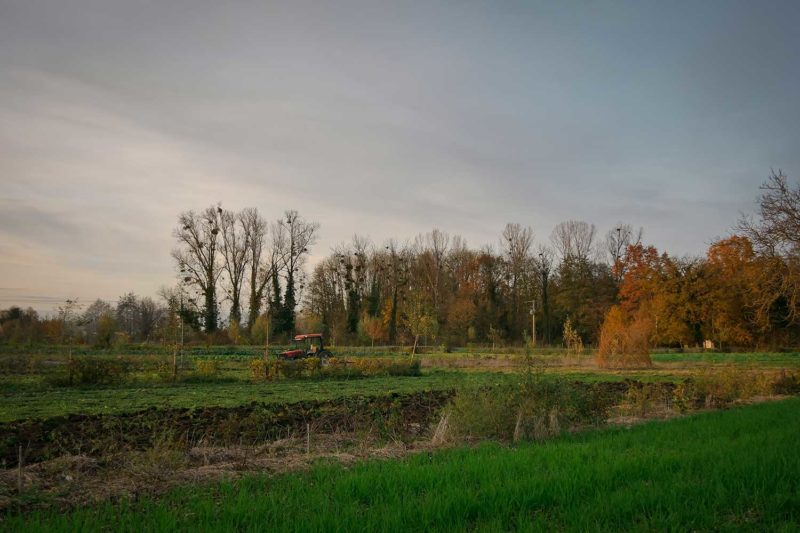
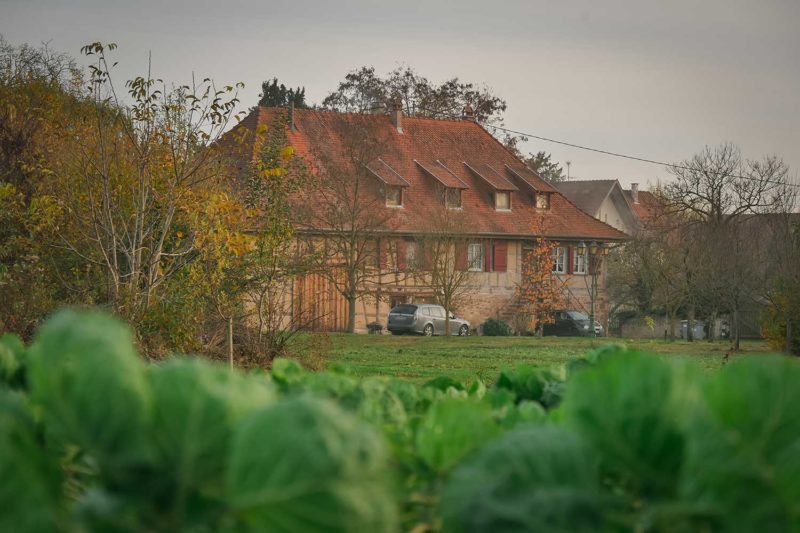
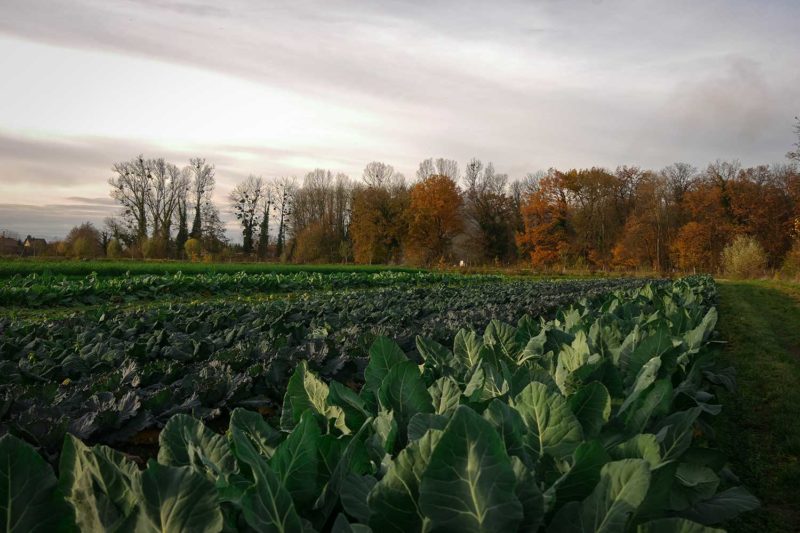
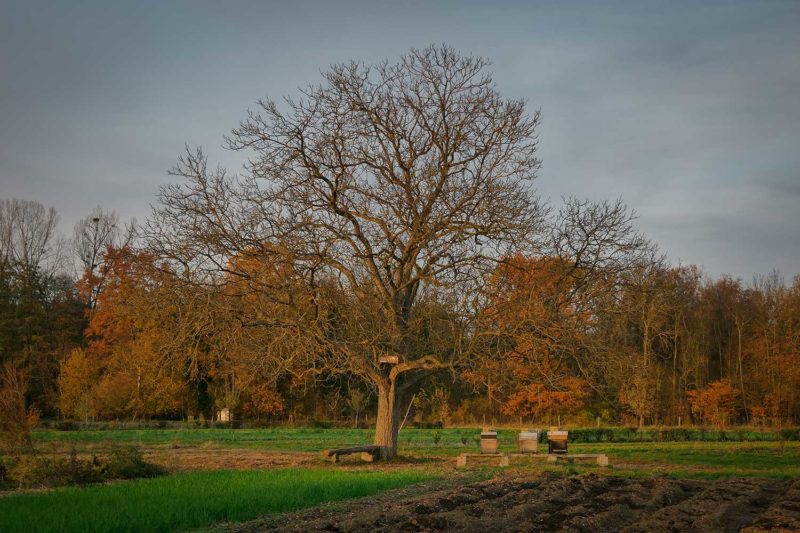
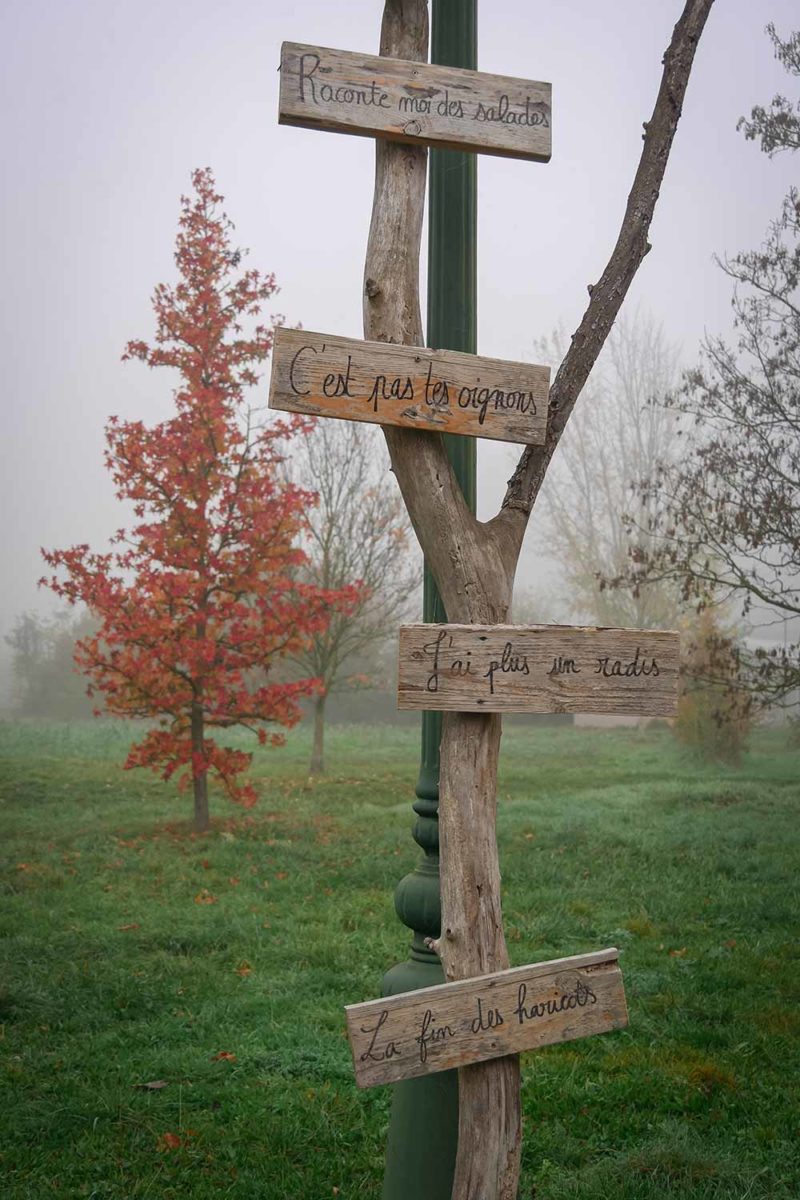
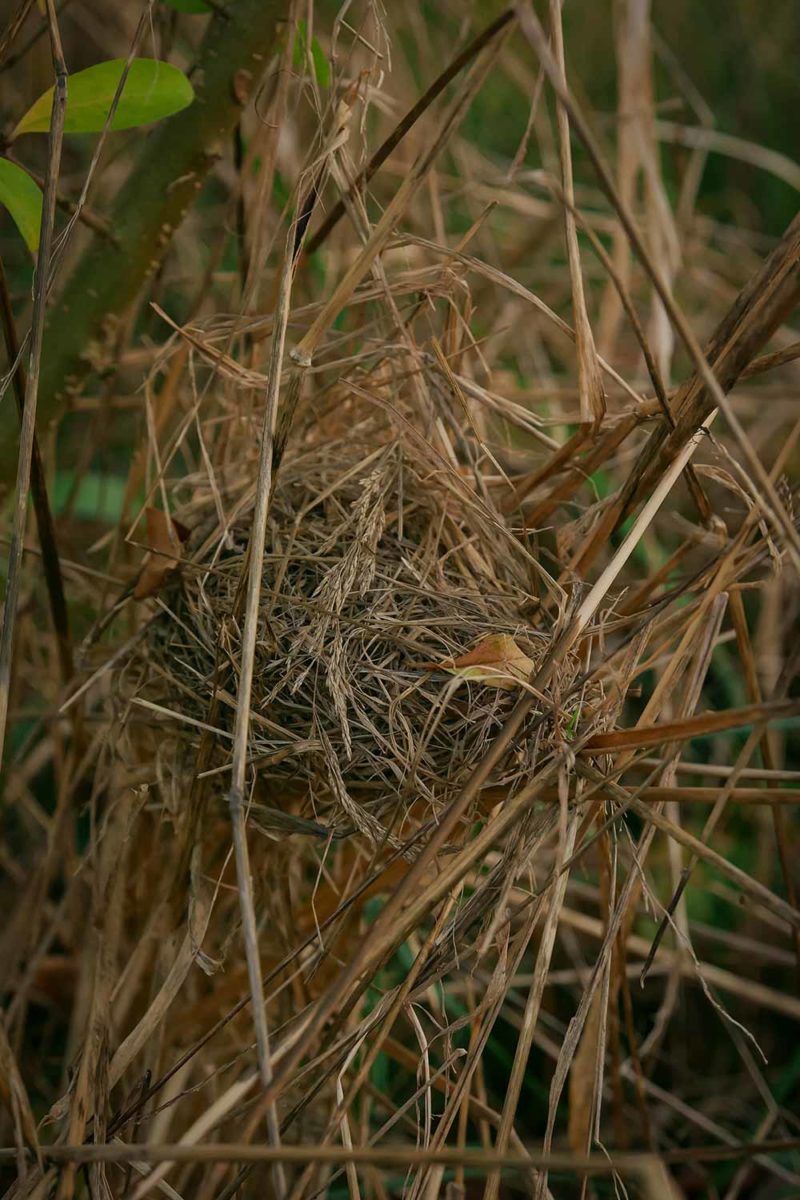
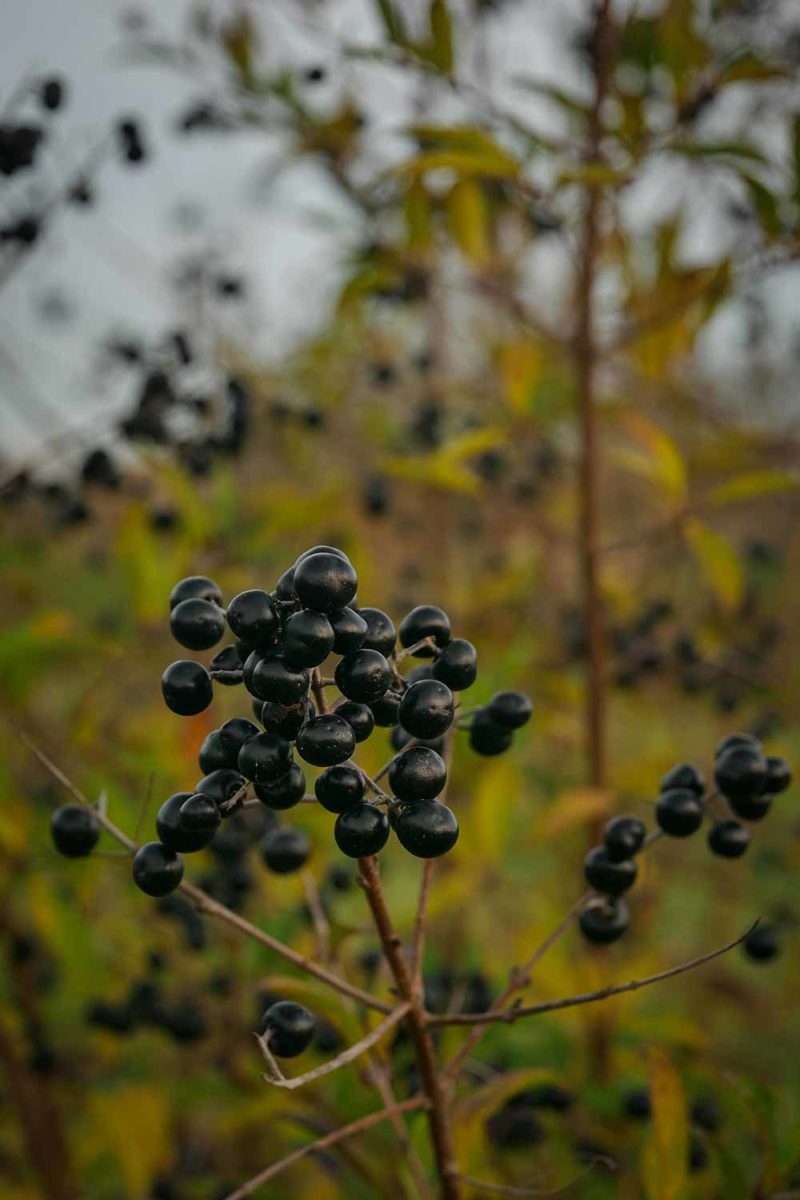
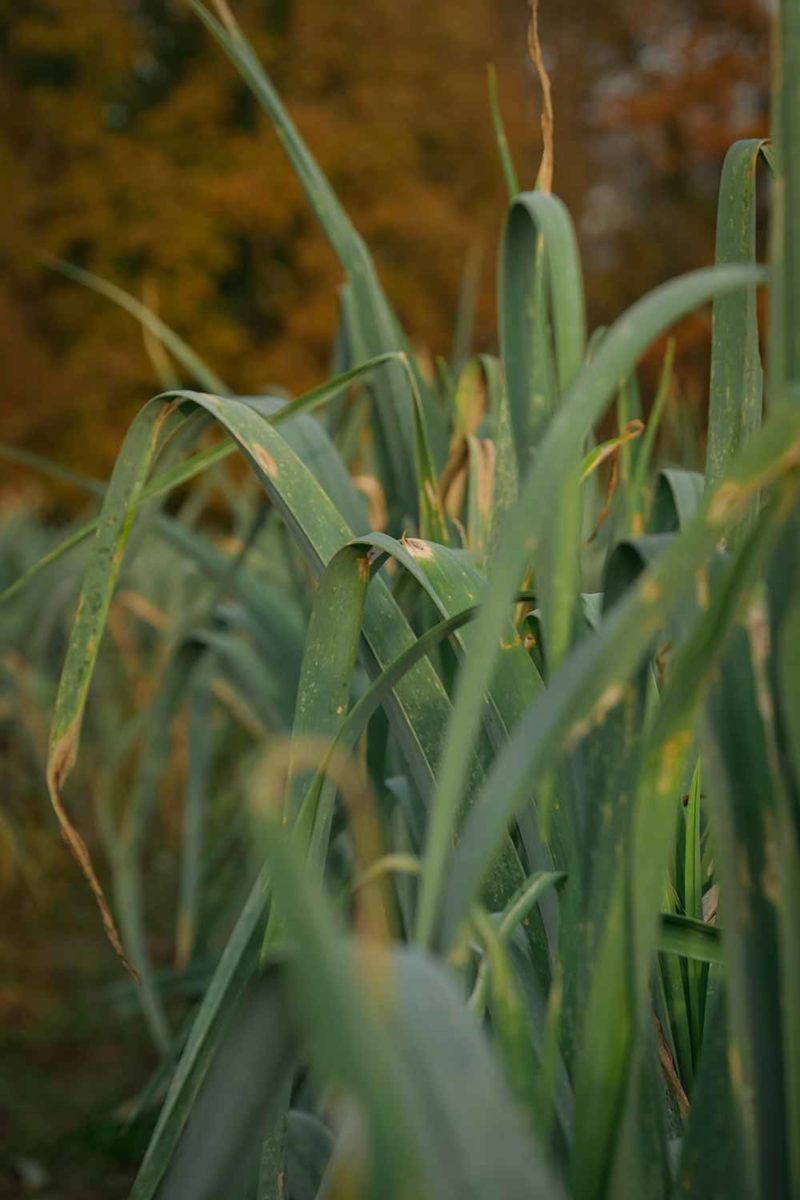
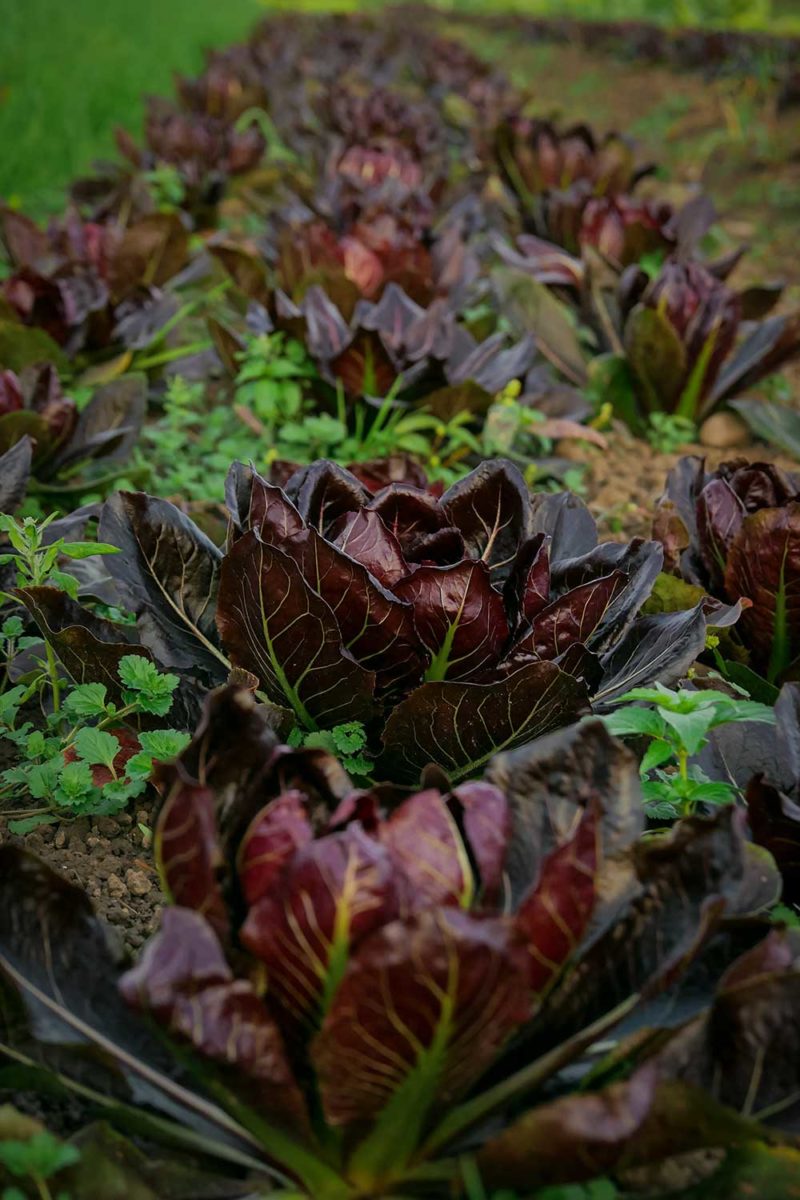
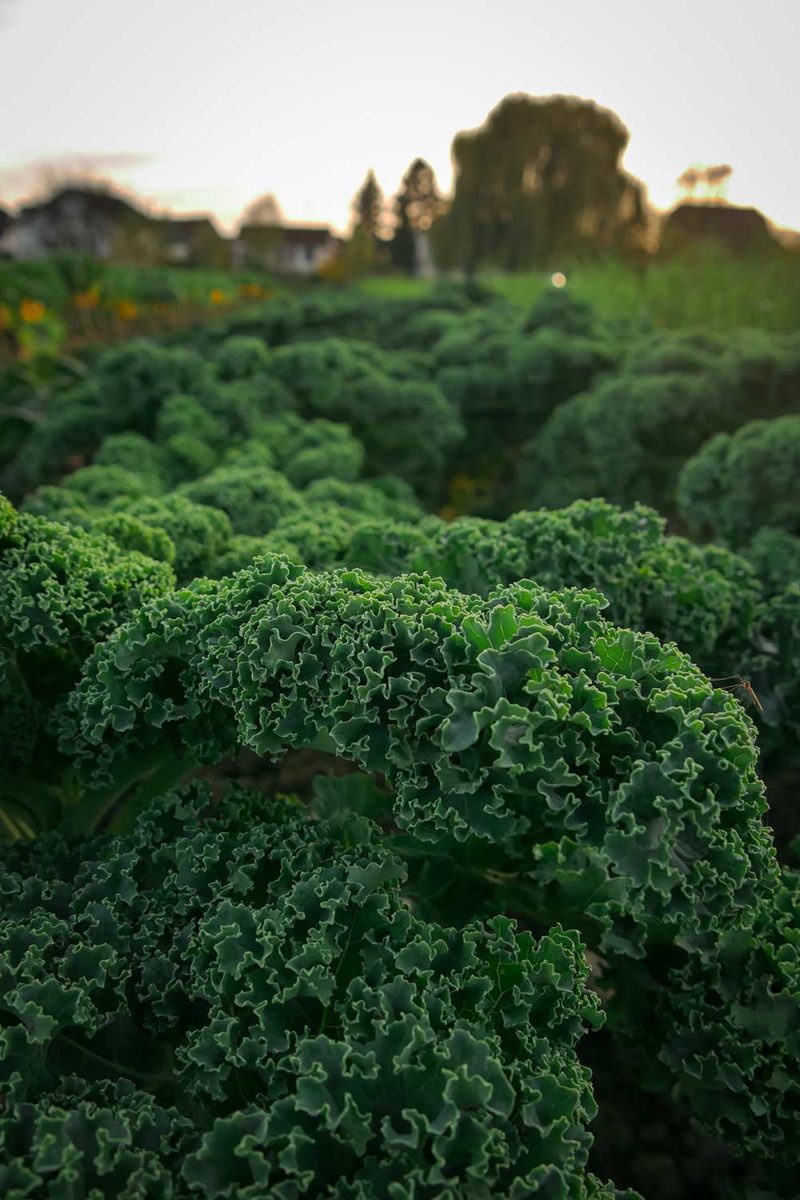
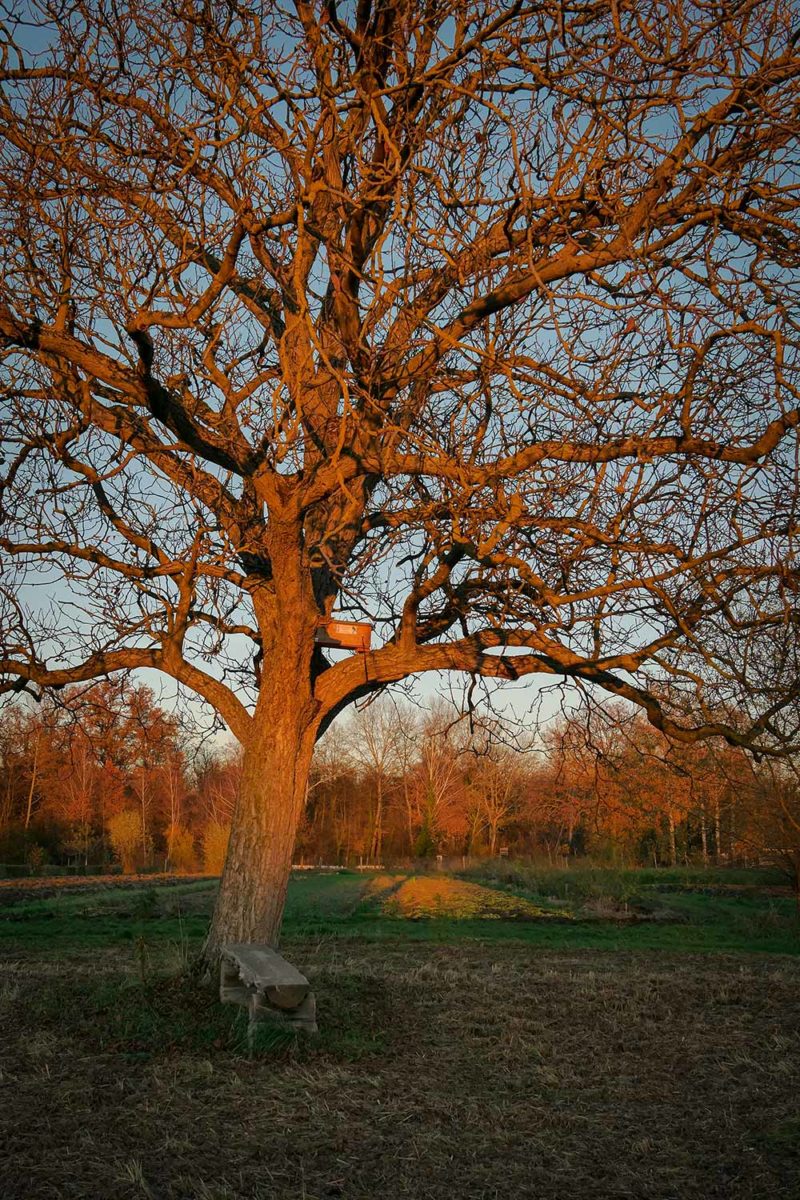

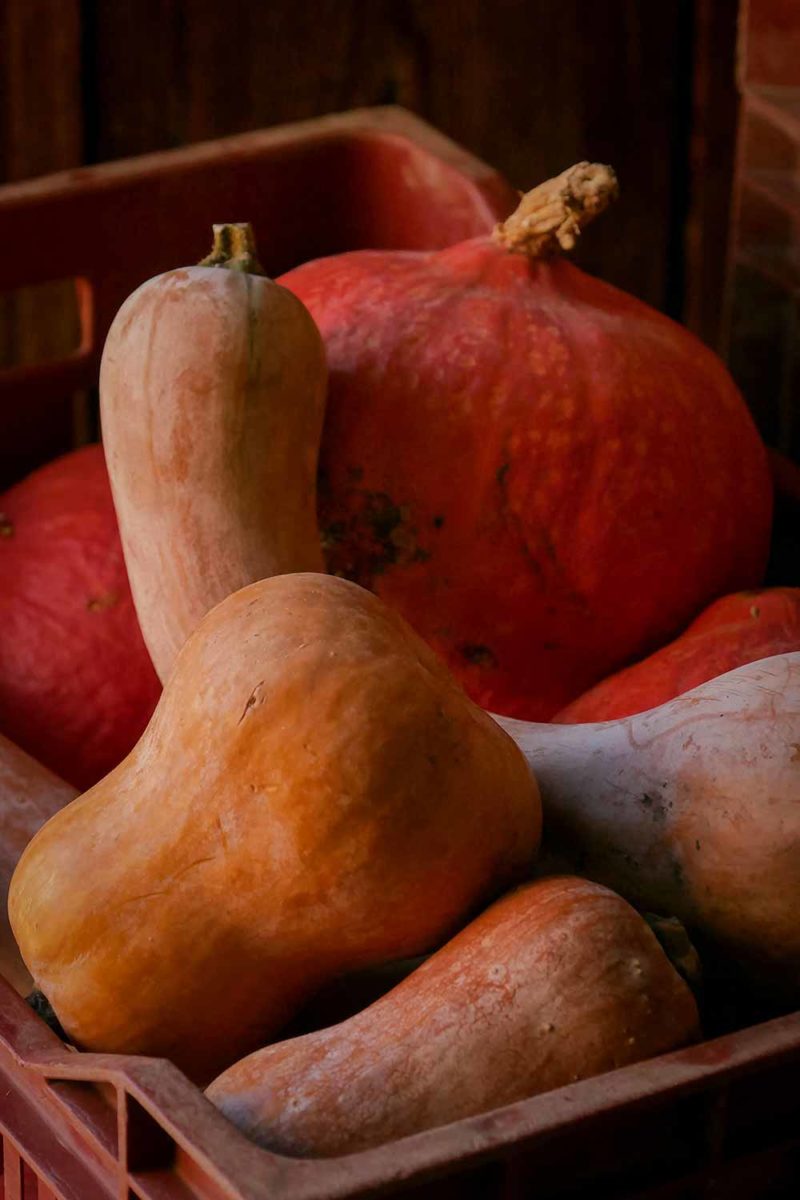
Views of the farm and the various cultivated plants.
Yet other organic market gardening farms seem to work. A small farm not far from here, run by a young man friend of one of the farm workers, seems to be successful. So what is the reason for this difference?
First of all, it seems extremely necessary to limit the size of our farms. Ten hectares is already a too large farm. Limiting ourself to 2-3 hectares would make possible to do without motorized agricultural machinery and to monitor production in a much simpler way. This would also make it possible to operate with a small team and to avoid problems inherent in managing people. The small size of a farm would also make it possible to combine production with processing. Not sell only fresh produce but also processed locally: jars, syrups, preserves, herbal teas … It therefore seems necessary to limit the size of the farms but to increase the number of them. Having several for each municipality and possibly using specializations: vegetables, cereals, fruits, medicinal plants, breeding, beekeeping, bread … Each municipality would then have its network of small organic farms capable of feeding all the inhabitants.
The second point concerns the absolute necessity of having the right knowledge. Many of the neo-peasants and new rural people, myself first, do not have sufficient knowledge to realize the difficulty of the necessary work and the good implementation of an exploitation. Passing a BPREA (Professional Certificate in charge of an agricultural enterprise in France) allowing you to set up as a farmer is not enough. Just like learning from books or on the internet. It is absolutely necessary, before settling in a professional way, to learn the basics of the basics (before learning to manage a business, it is necessary to learn to know the plants, the soil and the environment). Then go to work in different farms in order to be confronted with different ways of working. Whether it is as a volunteer or an employee, it does not matter but it is necessary to multiply experiences to accumulate concrete knowledge to be subsequently able to respond in the best possible way to the problems posed in our own farm. Or we must accept, if we start without knowledge, that it will take time and that profitability will not be there for a hell of a time.
The question of ergonomics in the fields is a very important point and one which seems to me far too neglected by many people. Working in the fields or in your vegetable garden, if you want to have a correct production, requires, first of all, a very well thought-out crop design upstream but also a perfectly thought out implementation on the ground. For the well-being of the body, the mind and the operation itself, you have to design your production space with ergonomics at the forefront. For example, it is very important to leave enough space between the beds so that the harvest is not too difficult, that a wheelbarrow can pass, and that the vegetables planted on the side of the bed are not damaged. It is also important not to design beds that are too long. Better to make several small beds than a very long one. If the surface in the end is the same, the pleasure of the work will be different. It is indeed much more mentally tiring to work on a long bed that does not end than on several small beds. As the work of a market gardener is done a lot on his knees or bent, you have to think about this when creating the planks: making mounds, designing at human height, mulching passageways … Visual well-being is also very important for the mind. I think it is necessary to leave uncultivated spaces, free, with flowers, on the one hand to reinforce biodiversity but also to let the mind rest. For many people, adapting their farm ergonomically means losing cultivable space (since beds are more spaced, some spaces are not cultivated …). However, a pleasant and well-designed space will automatically be more productive because work will be easier and well-being will have repercussions on the environment and on people. For me who did a master’s degree in Interface Design where the question of ergonomics occupied a central place, this point is fundamental and interests me enormously.
The notions of aesthetics and tales join the question of ergonomics on many points. For a market gardener who sells his organic products more expensive today than conventional ultra-polluted products, attracting the consumer is a challenge. Especially in a world where the vast majority of the population has yet to realize the importance of eating healthy food. How do you get people to take an interest in these products? This is where aesthetics and tales come into play. First of all, it is very important to have a beautiful organized production site (not English lawn style, but naturally beautiful and lovingly maintained). The aesthetic should also apply to farm marketing, labels and carting. It is not the foods that must be aesthetic (they are already naturally aesthetic, in all their diversity) but everything that affects their sale. To make a market stand or basket more attractive than another, you have to work on its aesthetics.
To this is linked the notion of tale. Selling a production is not enough, you have to sell a story, a tale. Something that touches people’s hearts. It is more than vital to invent new imaginations, new fables, new stories to change the way we see the world and society. We have to reinvent a new paradigm. And it starts at the market gardener’s scale. He who is in direct contact with the earth, the soil, the insects, the plants. He is one of the first to be able to tell new stories and directly reach the population. An apple is just an apple for most people. But an apple is not just an apple. An apple is the evolution of the world in the form of a fruit. It is a multitude of interactions between living things. It is a body of knowledge. It is endless stories begging to be told.
I lift my eyes to the sky. It is not raining anymore, the sun appears beyond the clouds. The wind changed direction, the smell of the sauerkraut factory nearby is gone. I have been here for a month. I did not learn a lot about planting vegetables, but I learned a lot about everything else. All of these discussions and thoughts have cleared my mind. Of the three main themes of organic food production, natural health and eco-construction, I have chosen to definitively orient myself professionally towards the one that interests me most: eco-construction. I am not giving up on others, far from it, but for now I will favor eco-construction. And then despite some culture choices that I disagree with, I wholeheartedly wish the farm team to get through. To hang on in spite of the difficulties and continue the battle to keep moving forward. The farm is beautiful today. But it will be even more so tomorrow, when all the hedges will have been planted. When the orchard will have grown. When new practices will have been put in place. It is going to take some times, but I want to believe that by hanging on, we can change the world.
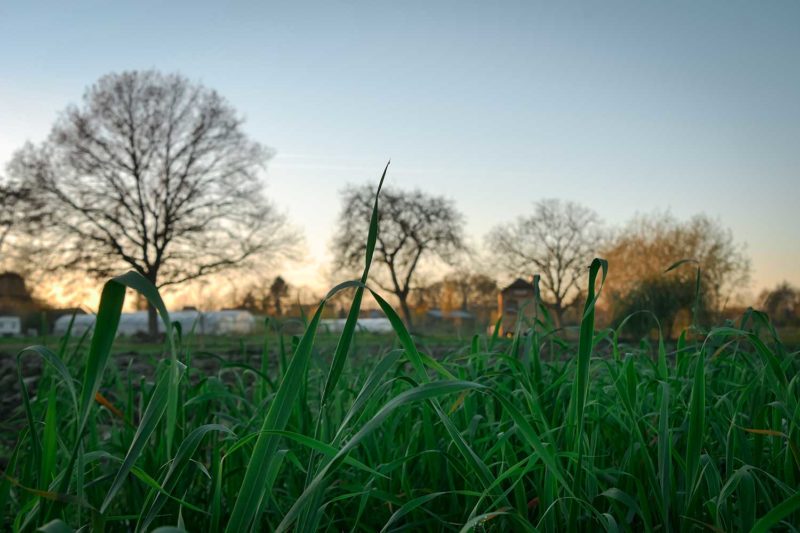
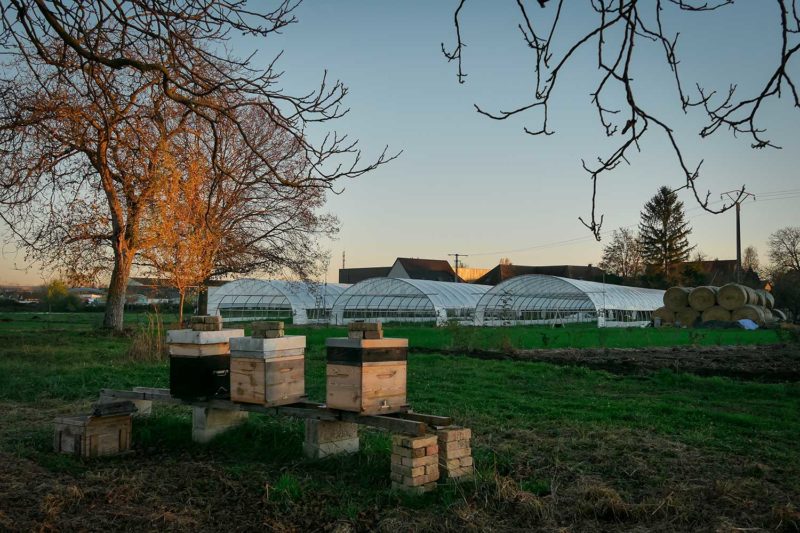
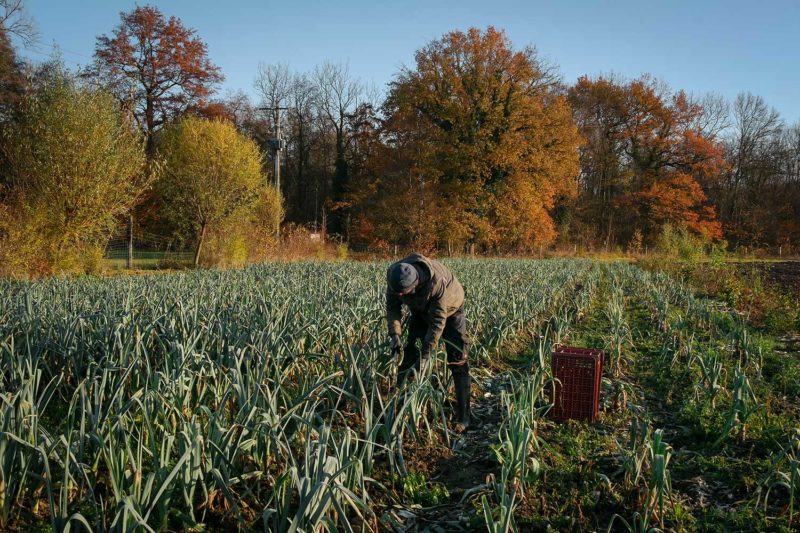
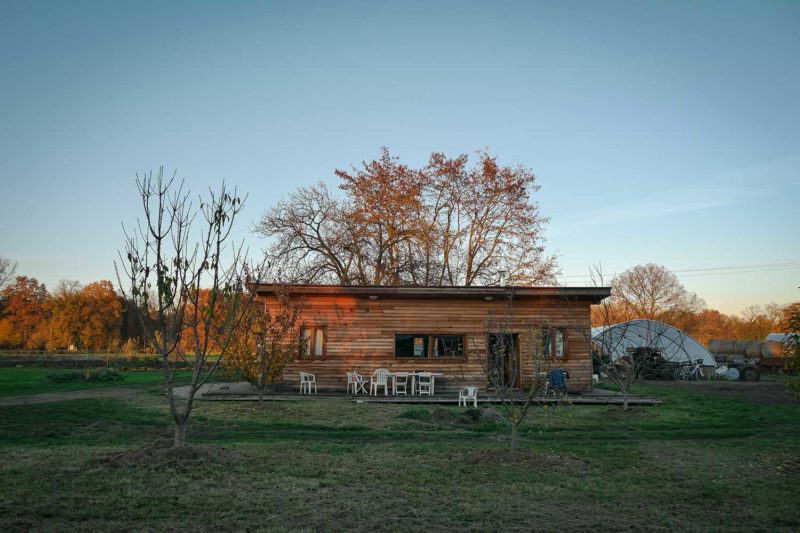

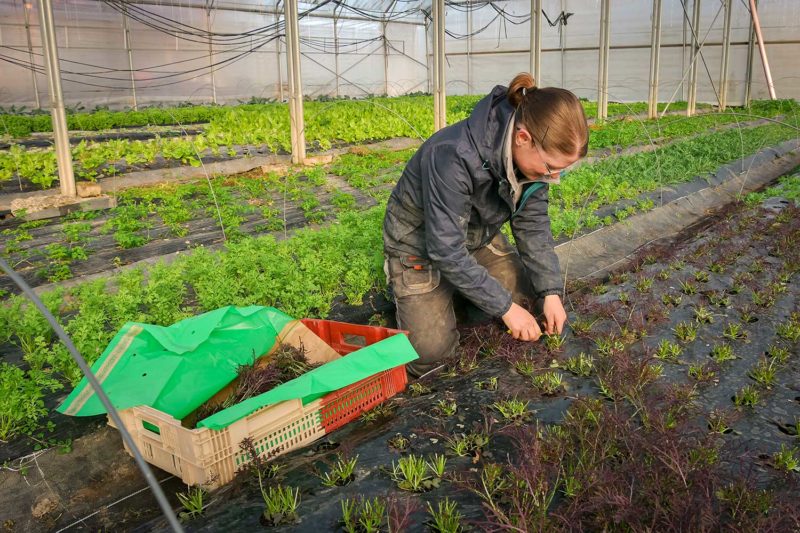
The new greenhouses at the top right, the living space for volunteers and employees in the middle left, the lamb’s lettuce at the bottom left and the Mizuna harvest at the bottom right.
Note: In order to respect the right to privacy and anonymity on the net, the names of places and people have not been mentioned.
